Monaco GP: Jolyon Palmer column - Mad, draining, fun, intense
- Published
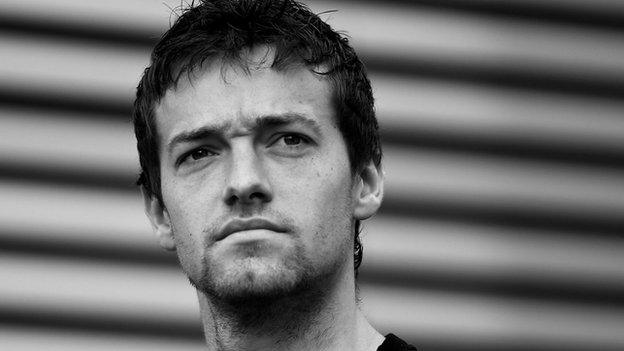
F1 driver Jolyon Palmer, who left Renault at the end of 2017, joins the BBC team this season to offer insight and analysis from the point of view of the competitors.
The Monaco Grand Prix is madness - but marvellous madness.
From the minute a driver arrives there, it is impossible not to get caught up in the incredible atmosphere of this most famous Formula 1 race.
Winning in Monaco is what every driver dreams about when they are growing up. Parking your car on the main straight and heading to the podium on the palace steps - it sums up this iconic event.
Of course, there is the glamour, the harbour, and the beautiful Cote d'Azur backdrop, but that's the window dressing for the centrepiece of the Monaco Grand Prix - the track itself. There is just nothing else like it.
If you created this circuit elsewhere now and went to the FIA, F1's governing body, for approval, they'd just laugh at you.
By F1 track standards, it's ridiculously narrow, with corners so tight you'd barely accept them in the paddock, let alone race around them.

Palmer tackles Monaco's famous hairpin turn in 2016
Only when you watch the cars in real life around Monaco can you fully appreciate the skill level it takes to drive it - how narrow it is, how fast the cars fly through the streets and how bonkers the whole race weekend is.
Imagine driving your road car at 60mph on the motorway. It would feel extremely slow. That's a bit like how a typical modern circuit with lots of run-off areas feels for an F1 driver.
Monaco would be more like driving your road car at 60mph down a single-track country lane. Suddenly the same speed feels extremely quick.
You then get more adrenaline from the knowledge that any minor error will result in you hitting the wall and being out on the spot, whereas on most modern circuits there are plenty of run-offs, and mistakes often go unpunished.
What's it like to drive?
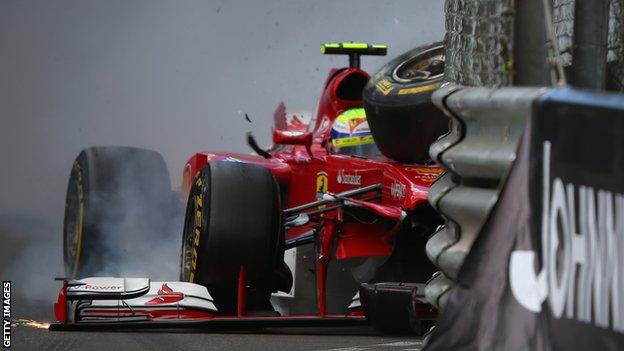
The barriers that line the Monaco track will punish even the slightest mistake, as Felipe Massa discovered in 2013
It's an exhilarating moment in a driver's career to be driving on those streets.
I remember my first laps around the circuit, in GP2 (now Formula 2) back in 2011. After a few laps, of course, the novelty wears off and it's about doing the job.
I remember getting up to speed, thinking I was doing OK, and then Romain Grosjean - who was on his way to becoming champion at the end of the season and a return to F1 - flew past me, much more experienced and more up to speed with the car and circuit…
I thought: 'Wow, I'll never be matching his pace.' But as you do more laps and get more comfortable with the car and the track, the time just comes.
It's all about building up to it, bit by bit. Too quick too soon and you can easily find yourself in one of the barriers and on the back foot for the whole weekend. In F1, I sadly did that as well in 2016.
F1 drivers experience high G-forces every weekend, but usually they are mostly lateral. In Monaco, they go vertically, too.
It's very hilly, with blind brows and bumpy surface changes beyond. And as if that's not enough, it has the infamous tunnel. A full 350 metres of underground walled asphalt, an acceleration zone to 175mph, and a blind one at that, as it continually curves before you burst out of the gloom into the harbour-side sunlight.
The undulation is such in Monaco that as you get the power down out of Turn One you are just looking up at the sky, weaving through the barriers on the way up to Massenet. It really is the most amazing circuit to drive.
While the drivers are learning all the time, edging ever closer to the limit and hopefully the perfect lap, the track evolves even more than the drivers, which is typical of street circuits.
On Thursday morning for first practice, the circuit will be in terrible condition. There is no rubber down and it is very slippery because, unlike most F1 circuits where on a non-F1 weekend other races might be held, Monaco hasn't seen proper track action since the chequered flag the previous year.
With every subsequent lap, the track gets cleaned up and more rubber gets deposited, increasing the grip level. The lap times naturally drop.

Given the track's narrow confines, accidents in Monaco are usually spectaular - as demonstrated here by David Coulthard (6), Jean Alesi (27) and Gerhard Berger (28) in 1995
The highlight of the weekend
The main thrill for the drivers is qualifying day. In the whole season of racing, this is the day that gets the heart beating hardest.
Flat out, giving it everything you can between the narrow walls. The pressure is only intensified by the knowledge that the difficulty of overtaking means the grid order almost decides the race, or certainly makes a massive difference to your aspirations on Sunday.
When it all comes down to one lap in qualifying, the drivers will be brushing walls on either side, using all the margin they have, and sometimes more, to extract the perfect lap.
The adrenaline is through the roof and the heart is really pumping by the time you come into the faster corners, Tabac and Swimming Pool on the harbour front near the end of the lap.
It takes absolutely maximum commitment to thread the car between the walls in this section, with such high speed and such a narrow track.
After a typical Monaco qualifying session, when the cars are parked in parc ferme for scrutineering, there are always scuff marks from the walls of the tyres and maybe even on the odd front wing end-plate.
What's the race like?

Olivier Panis' famous victory from 14th on the grid in 1996 is a standout Monaco memory for Palmer
Monaco has produced some processional races - there's historically not a lot of overtaking because it is so tight. But there have also been iconic moments.
I remember growing up, watching the chaotic race of 1996 when Frenchman Olivier Panis won in the wet in his Ligier, and there were only four finishers.
Then, of course, there was the scandal when Michael Schumacher parked at Rascasse in qualifying in 2006 to prevent his rivals beating his time.
And in more recent times Nico Rosberg had his own Schumacher-esque moment at Mirabeau at the end of qualifying in 2014. He ran wide and caused a yellow flag, which meant Mercedes team-mate Lewis Hamilton could not improve his time. Rosberg said it was not deliberate, but it deepened the feud between them.
Seventy-eight laps of Monaco on Sunday is a slog in an F1 car. It's one of the longest races of the year and there isn't a second's rest.
Even the straights aren't straight. The tunnel, while taken flat-out, can catch drivers out if they get off line on to the 'marbles' - bits of rubber and debris which are incredibly slippery. Many drivers have crashed there over the years.
And the pit straight is bumpy and barely long enough to catch your breath. Get off line on the braking zone into Turn One and it's an accident waiting to happen at Ste Devote, the first corner - the most common place on the circuit for people to crash.
From the outside, the race can be a procession, but from the inside it's a challenge of pushing to the limit, without a single mistake, with barely a chance to speak over the radio, to have a drink, or to even remove a tear-off strip from your visor to help visibility.
I finished 11th last year for Renault - close to a point but not quite. I was lucky enough to win this race twice in GP2, though, and even in the lower category, they were probably my best drives, and the highlight of my racing career.
You can see the pure delight on the driver's face when they win this one and the hurt of the driver that comes second.
For the last three seasons the man on pole position hasn't won. Hamilton lost out to Rosberg in 2015 after a late-race safety car, Red Bull's Daniel Ricciardo was second in 2016 after a mess-up in the pit stops handed the win to Hamilton, and last year Kimi Raikkonen was on pole but was passed by his Ferrari team-mate Sebastian Vettel in the pit stops.
All three drivers understandably looked a picture of misery on the podium after the race. Such is the importance of winning this one.
What's it like to work there?
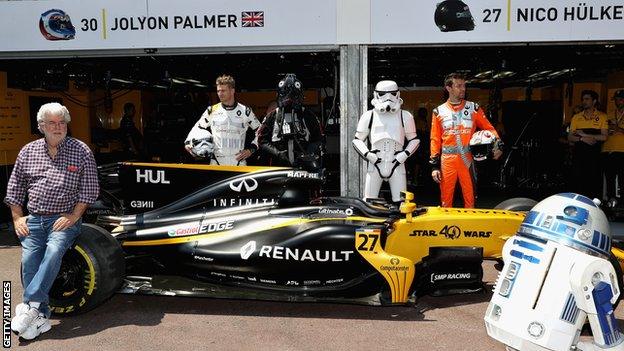
2017: Palmer (in orange) poses for the cameras with Star Wars creator George Lucas, a TIE fighter pilot, a Stormtrooper and R2-D2 - just another day in Monaco
There is no doubting the glamour and cachet of Monaco, but it is not the easiest place to work.
As the drivers turn up on the Wednesday morning, they will be immediately reminded of the special weekend ahead. The place is chaotic - roads closed, people everywhere, the only real way to get around is on scooters. But it all adds to the magic of this one-off event.
Many drivers do a track walk on the day before practice - you do a lap of the track on foot with your engineers, discussing set-up and plans for the weekend ahead, and looking out for any special features of the circuit that might come in handy.
Not all of the drivers do this, but for those who do, it is spent dodging traffic as the road is still open to the public.
Heading up the immensely steep climb from Ste Devote towards Massenet and the famous Casino Square, the road is littered with various supercars as the rich and famous swan in to see the weekend action - and get seen themselves.
Once the weekend starts, the fun doesn't stop. In the evenings the track opens up to be normal roads once more, and sections on the harbour front become bars and restaurants again, with people spilling out all over the track around the famous Rascasse bar, after which the corner is named.
For the drivers, there are plenty of extra curricular activities, too. The Amber Lounge fashion show has become a tradition in Monaco, with drivers strutting their stuff on a catwalk for a charitable cause and a bit of fun.
Anybody who is anybody comes to the Monaco GP; sponsors, executives, partners. From a driver's point of view, there's always something to be doing, someone to be speaking to and people to be schmoozing.
That's the life of an F1 driver in general, but it's on overdrive in Monaco. Sometimes it feels a bit claustrophobic, but it's a price worth paying for a unique race.
And after the race, even if things don't go your way, there is a chance for the drivers to all let their hair down.
Monaco is the best race in terms of a party atmosphere as well and the drivers, usually so professional during the season, get to enjoy themselves a bit, after the most mentally draining weekend of the season.
- Published22 May 2018

- Published27 May 2018
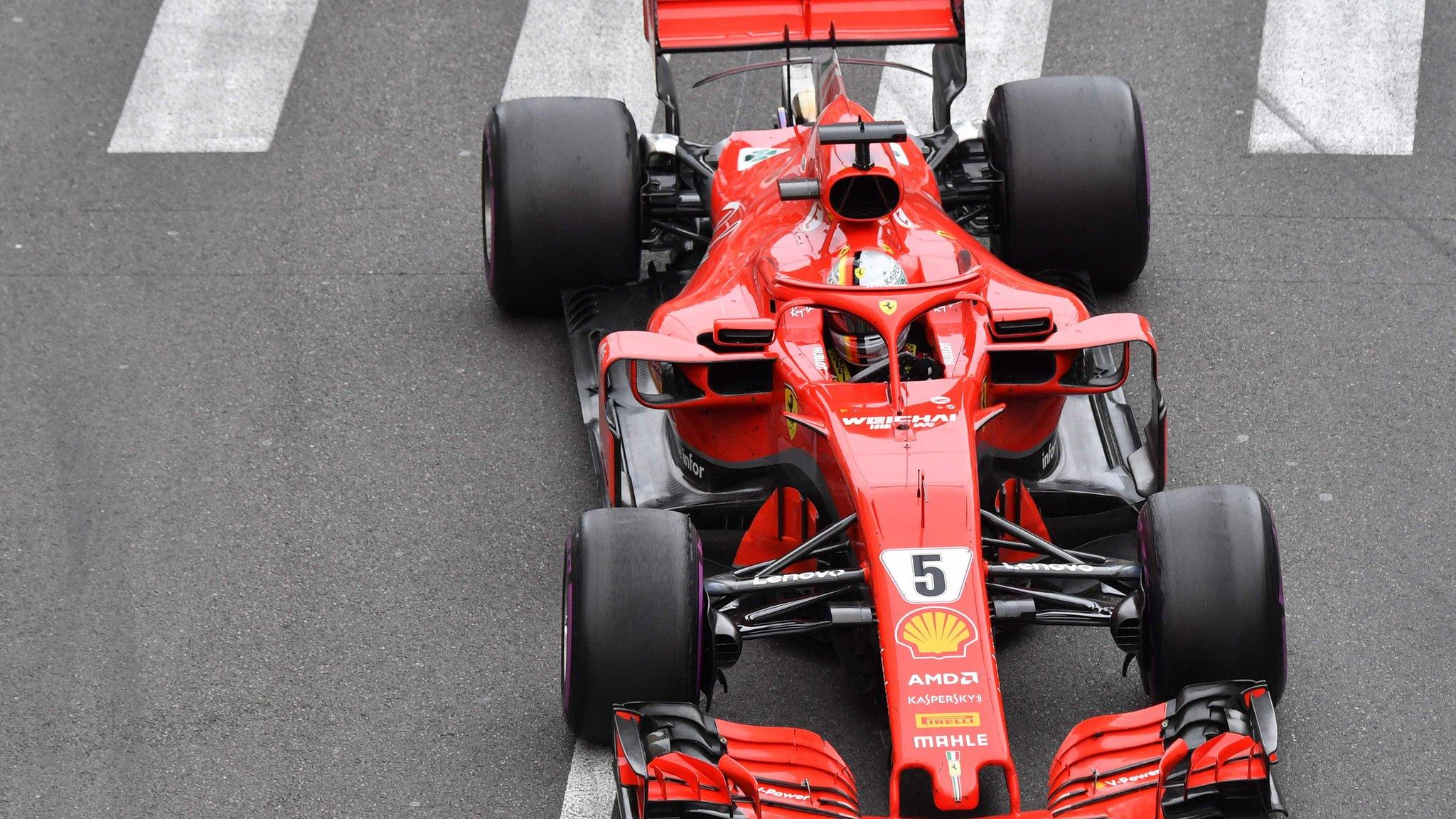
- Published21 May 2018
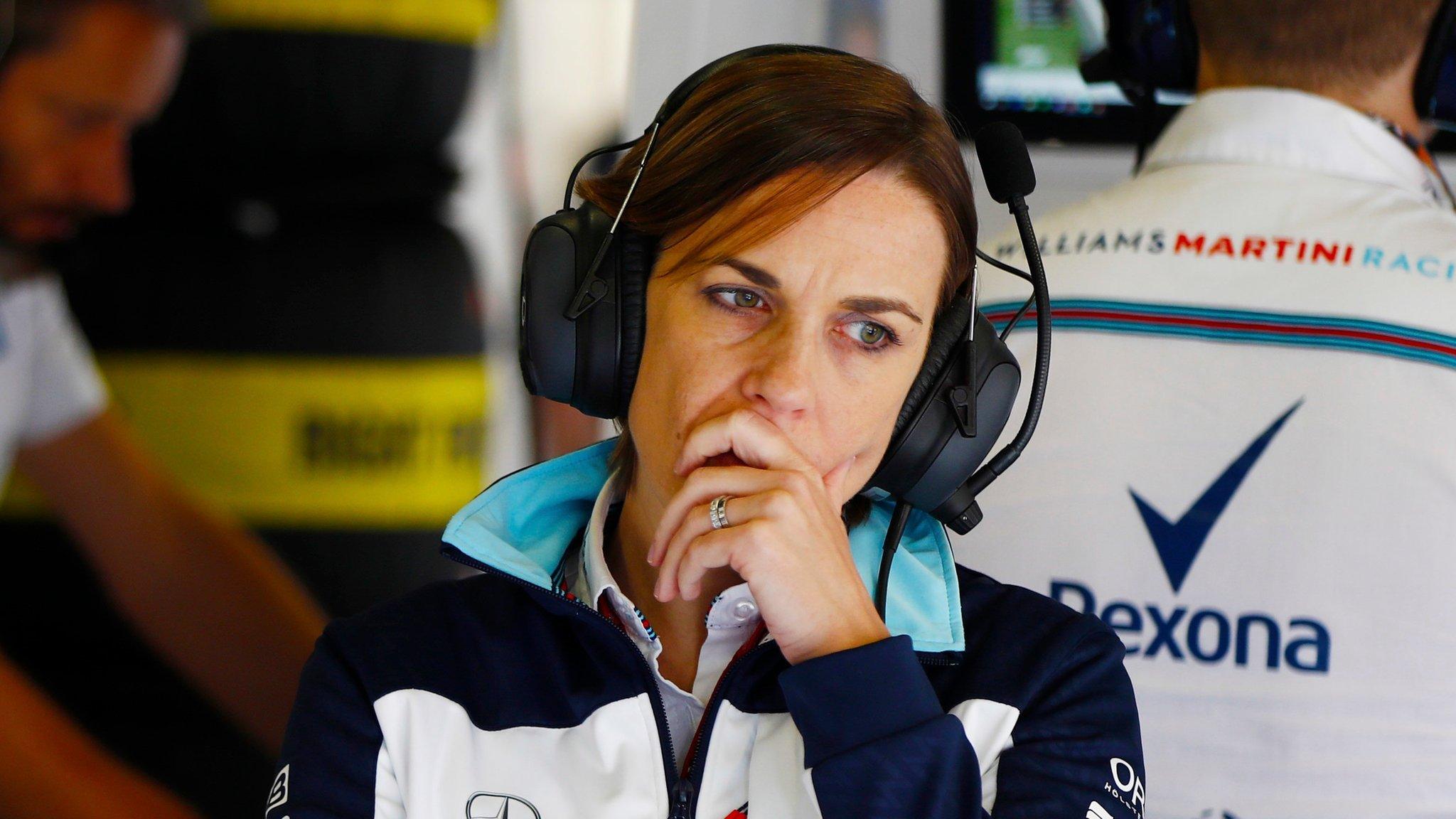
- Published14 May 2018
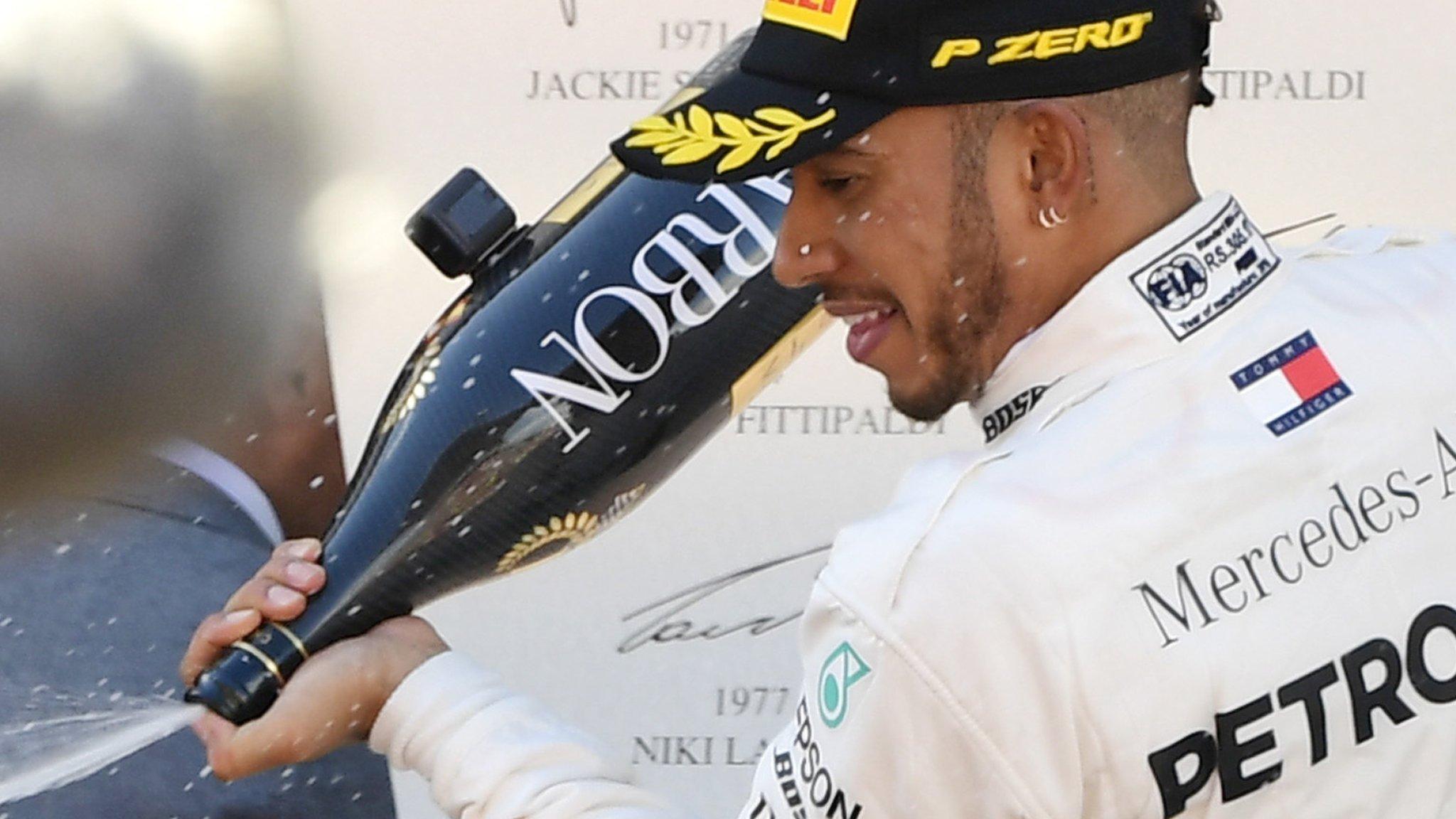
- Published13 May 2018